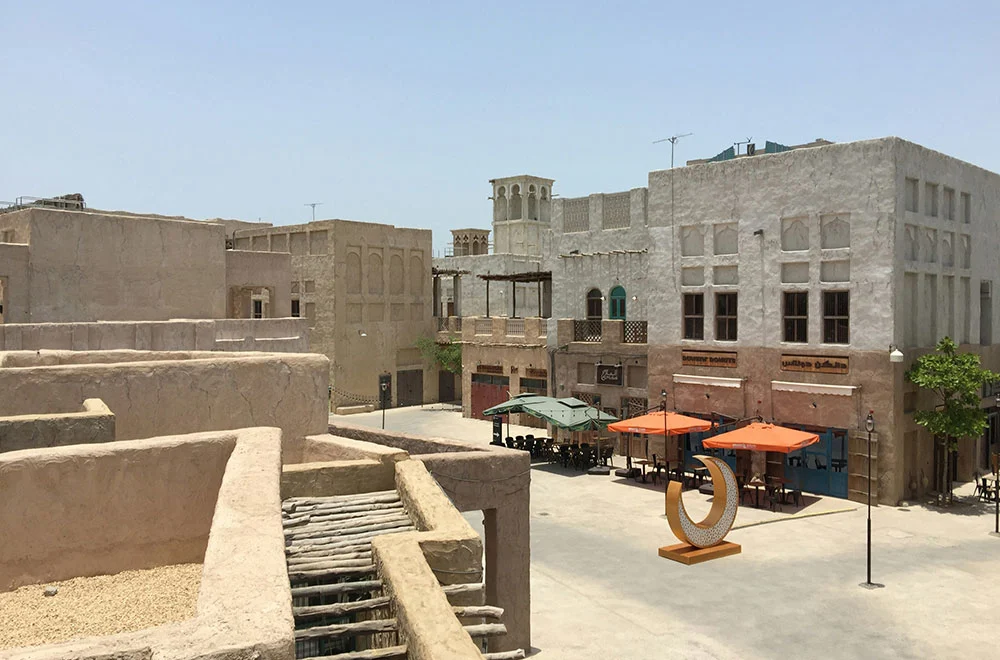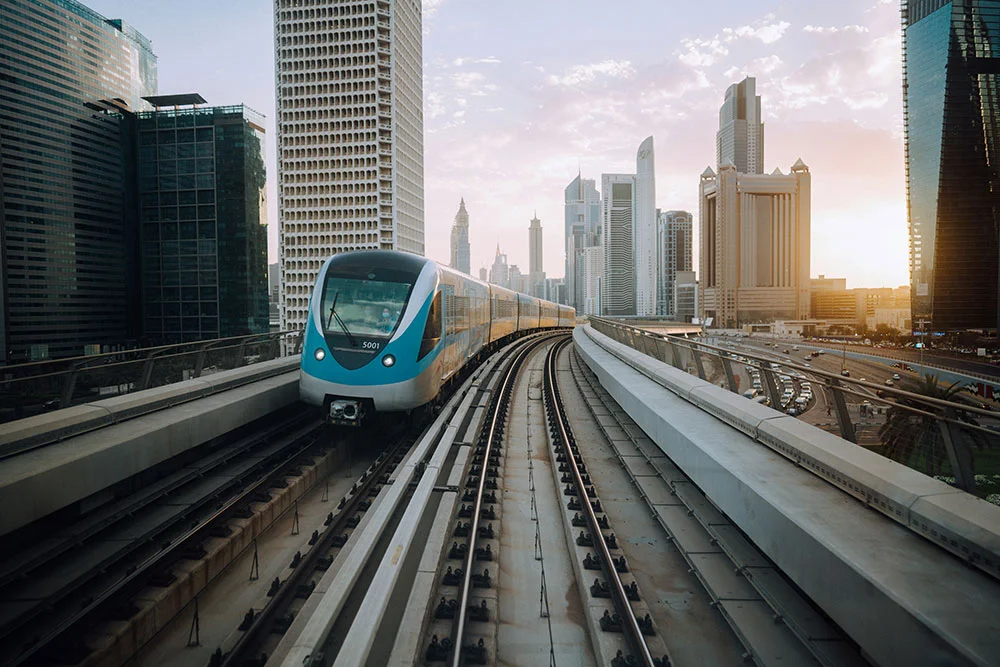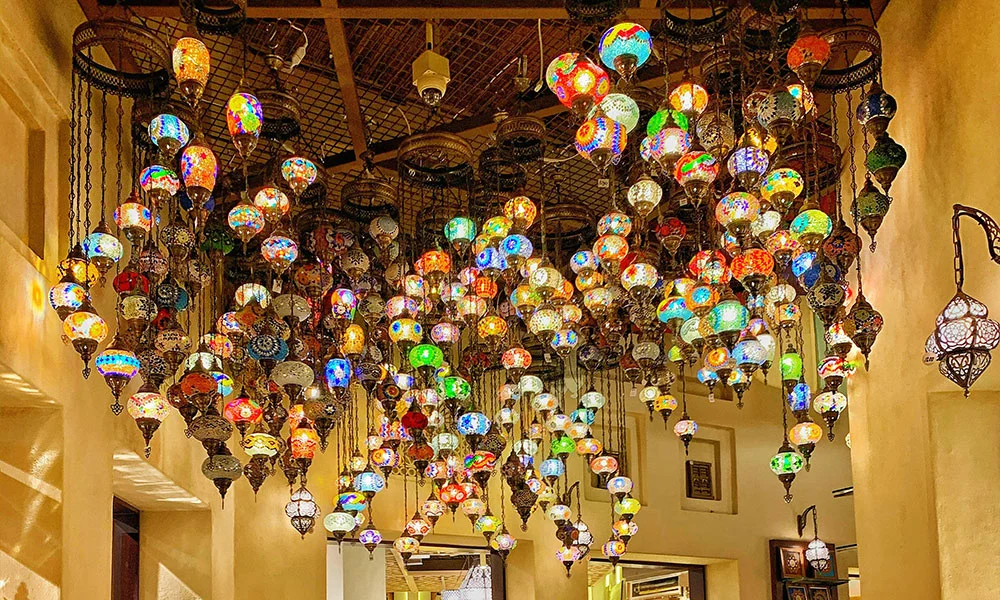Dubai Old Town, or the Al Fahidi Historical Neighbourhood, is one of the city’s earliest settled areas. Built in the 19th century, it reflects Dubai’s origins as a trading centre through its preserved wind-tower houses and narrow lanes.
This guide explains its key landmarks, transport links, cultural customs, and local dining, giving travellers concise, factual advice for visiting the area.
Understanding Dubai Old Town’s History and Heritage

Dubai Old Town, officially known as the Al Fahidi Historic District, dates to the early 19th century. The area includes over 50 preserved buildings made from gypsum, teak, and coral stone. Wind towers, called barjeel, were an early form of natural ventilation.
The Dubai Museum, housed within the 230-year-old Al Fahidi Fort, displays artefacts from historic trade with Africa and Asia. According to Dubai Municipality, the fort previously served as a palace, garrison, and prison before opening as a museum in 1971.
Traditional souks nearby continue the area’s trading heritage in spices, textiles, and jewellery. The UAE Ministry of Climate Change and Environment advises against handling historic materials or artefacts.
Top Landmarks in Dubai Old Town
Key landmarks include the Dubai Museum in Al Fahidi Fort (built 1787), the city’s oldest surviving structure. Sheikh Saeed Al Maktoum House, once home to Dubai’s former ruler, provides insight into 20th-century architecture and governance.
Cultural spaces such as the Majlis Gallery and XVA Gallery exhibit regional and contemporary Middle Eastern art. Most sites are walkable and open daily, though schedules may vary during public holidays. Visitors should confirm opening hours in advance and dress modestly in cultural sites.
Best Time to Visit Dubai Old Town
The most practical time to visit Dubai Old Town is between November and March, when daytime temperatures average 20°C to 28°C. Cooler conditions make walking between sites more comfortable.
During summer, temperatures can exceed 40°C, limiting outdoor activity. Visitors should plan tours early in the morning or after sunset during warmer months and carry sufficient water.
Navigating Public Transportation in Dubai Old Town

The Al Fahidi District is accessible via the Dubai Metro Green Line, stopping at Al Fahidi Station. Public buses connect the area with Deira and Bur Dubai.
Water taxis (abras) operate across Dubai Creek, linking the Old Souk and Deira for a small fee. All public transport options accept the Nol Card, which can be topped up at metro stations and convenience stores.
Authentic Cuisine in Dubai Old Town
The Old Town includes long-established Emirati restaurants such as Al Bait Al Qadeem, serving Majboos and Luqaimat. Bait Al Wakeel, opened in 1935, is considered Dubai’s first formal restaurant.
Guided food tours from companies like Frying Pan Adventures introduce visitors to regional dishes and their cultural significance.
Cultural Etiquette in Dubai Old Town: Tips for Tourists
Public displays of affection should be avoided, and visitors must ask permission before photographing residents.
Clothing should cover shoulders and knees, particularly in mosques or government buildings. Alcohol consumption is restricted to licensed venues such as hotel bars, and drinking in public areas is prohibited.
Following these guidelines aligns with UAE cultural law and avoids potential penalties.
Budgeting Your Visit to Dubai Old Town
Many heritage attractions, including Al Fahidi Fort and the Textile Souk, have free or low-cost entry. Local meals typically cost between 25 – 40 AED per person.
Public transport offers the most economical travel between districts. Accommodation prices rise between November and April, so early booking helps manage costs.
Dubai Old Town’s Traditional Souks

The main traditional markets include the Spice Souk and Gold Souk, both reached by abra from Deira. Goods range from saffron and textiles to jewellery.
Prices are negotiable; polite bargaining is standard practice. Buying in bulk can reduce costs. Some modern souks, such as Souk Madinat, are built for tourists rather than heritage trade.
A printed or offline map helps navigate narrow market lanes.
Exploring Dubai Old Town on Foot
We recommend starting at Al Fahidi Fort, then walk through Al Fahidi Historical Neighbourhood toward the Textile Souk in Bur Dubai. Key stops include the Coffee Museum and the Sheikh Mohammed Centre for Cultural Understanding.
Begin early in the day to avoid high temperatures. Carry water and wear light, modest clothing suitable for outdoor walking.
Zennova Holidays have a walking tour partner ‘Walks of Dubai’, who provide specialised Old Town tours who will happily arrange a tour tailored to your needs. Get in touch, and we can happily facilitate this for you.
Accommodation Options in and near Dubai Old Town
Accommodation around Al Fahidi includes heritage guesthouses and mid-range hotels such as Arabian Courtyard Hotel & Spa. Airbnb listings are available in nearby Bur Dubai and Deira.
Rates vary by season and proximity to main attractions. A study by Rochester Institute of Technology () found machine-learning tools increasingly accurate in predicting nightly prices. Book early during winter months and confirm cancellation terms.
At Zennova Holidays, we regularly assist guests in securing affordable heritage accommodation within Al Fahidi’s walking radius.
